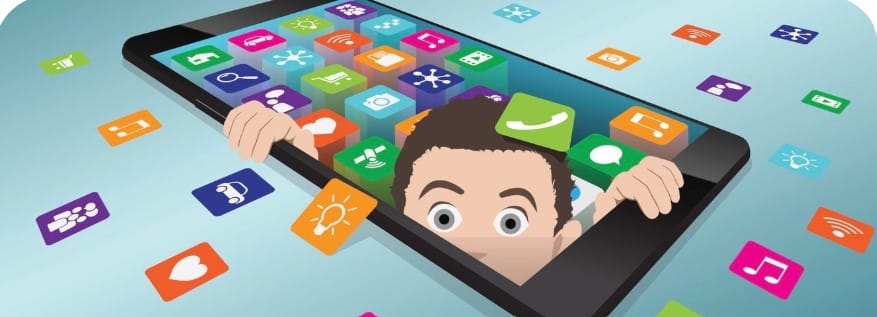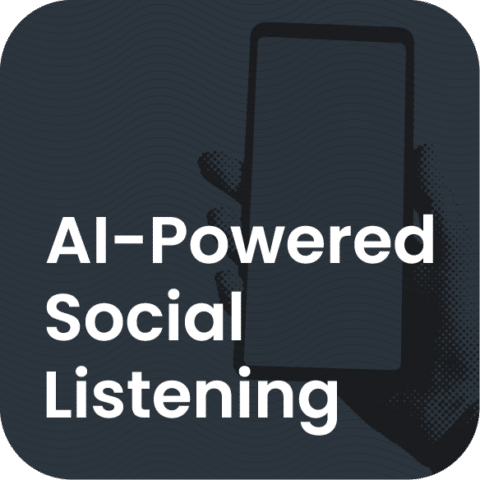In B2B, nothing moves fast.
Especially decisions.
You’re not convincing one person. You’re building trust with an entire team of stakeholders, each with their own concerns and criteria. That’s why B2B PR has always had to work a little harder, and a little longer.
But recently, there’s been a shift. PR pros are tapping into an overlooked resource in the B2B space … micro-influencers.
B2B micro-influencers are subject matter experts who’ve spent years earning credibility in tight-knit communities.
When they endorse a brand, people pay attention — and more importantly, they trust it.
Let’s take a closer look at why partnering with micro-influencers on your next B2B PR campaign could be worth it.
They shape industry narratives from the inside
B2B micro-influencers actively shape conversations within their industry. Many are hands-on practitioners who speak at niche webinars, lead community discussions, answer real-world questions in forums, and share and learn practical insights through platforms like LinkedIn and Substack.
They have years of experience and a history of showing up consistently. Plus a deep engagement with peers who trust their point of view.
Influence like this stretches because it happens organically.
When a micro-influencer introduces a new idea, tool, or framework, it doesn’t feel promotional. It feels like a trusted recommendation from someone who’s been in the same shoes. Placement like this is hard to buy and even harder to fake.
Over time, these narratives affect how B2B professionals think and buy. Let’s unpack this more.
They operate where B2B audiences actually engage
Micro-influencers communicate in the same digital channels where B2B professionals have real conversations. These aren’t casual social scroll zones.
They’re focused, intentional environments where people go to share knowledge, troubleshoot problems, and exchange insights.
Think:
- Private Slack or Discord communities (that feel more like invite-only masterminds than public forums).
- Niche Reddit threads like r/sysadmin or r/digitalmarketing.
- Substack newsletters that dive deep into emerging trends.
- LinkedIn threads packed with industry analysis.
This matters because B2B audiences don’t engage passively.
They seek out trusted sources in places where the signal-to-noise ratio is higher. B2B micro-influencers know this, so they meet their audience there with content that adds value.
When they break down new tools, challenge conventional thinking, or share firsthand experience with a platform or strategy, their content lands where buying decisions begin to form.
➜ This relevance is what gets remembered and revisited when the decision-making process gets serious.
They’re cost-effective and collaborative
B2B marketers often manage larger budgets than their B2C counterparts, but they don’t throw money at tactics that don’t move the needle. Every investment needs to support complex buying cycles, high-stakes decisions, and long-term growth.
That’s where micro-influencers contribute real value. They offer targeted reach, audience trust, and subject matter credibility that mega influencer campaigns can’t match.
Unlike traditional influencers focused on reach, micro-influencers prioritize alignment. They know their audience well and protect that relationship. When they agree to partner, they do it with intention.
This creates space for deeper collaboration.
Instead of stopping at a mention or post, they might help you co-author white papers, pilot products, or contribute to long-form thought leadership content.
When B2B audiences see a credible expert reference a brand across multiple channels — whether through case studies, interviews, or strategic content — they begin associating that brand with real expertise.
And a residual benefit?
If the micro-influencer has a high website authority score, their mentions will also help your client build high-quality backlinks over time.
They drive bottom-funnel influence, not top-funnel awareness
B2B micro-influencers play a vital role in nudging buyers through the final stages of the purchasing process.
Unlike consumer influencers who tend to focus more on broad awareness, B2B micro-influencers zero in on the details decision-makers care about most, like:
- Feedback from other users within the same industry
- Top features that save teams time and money
- Security and compliance capabilities
- Customer support responsiveness
- Flexibility to customize workflows
- Integration with existing systems
- Plans and pricing comparisons
- Scalability for future growth
- Total ROI
So, instead of dressing up in a fancy suit to promote a productivity app, they’ll give a practical breakdown. ➜They might share a hands-on experience, highlight ideal use cases, or explain which problem the product solves.
For example, an influencer might detail how a marketing automation tool saved their team hours each week. Or host a live Q&A addressing common concerns about the product rollout.
These examples clear doubts and answer questions so internal buying discussions can officially begin.
They can be a gateway to dark social
In B2B, a lot of the real, impactful conversations don’t happen on public social media or in open forums.
Instead, they unfold in what marketers call “dark social.”
This happens inside:
- Private Slack channels, WhatsApp chats, or Teams chats
- Private, one-to-one or small group interactions
- Private or forwarded emails or newsletters
- Invite-only Discord servers
- Closed LinkedIn groups
These conversations are often invisible to traditional tracking tools. But they carry a huge amount of influence since they happen in trusted, peer-driven environments.
Let’s unpack this more below.
Dark social isn’t shady
The term “dark social” can sound mysterious, but it’s far from shady. It describes how people share content and recommendations privately without using public channels or links marketers can easily track.
In B2B, these private channels are essential for honest, nuanced discussions about products, services, and vendors. Buyers feel safe asking tough questions and sharing honest opinions in these closed environments.
Plus, the absence of public visibility means conversations are less influenced by noise or hype, which creates a space for genuine dialogue.
This is where trust lives and where most meaningful peer-to-peer B2B referrals happen.
Micro-influencers hold key roles in these private networks
Micro-influencers are deeply involved in conversations that shape their industry on dark social.
They might lead private Slack groups, contribute to private Discord chats, or write niche newsletters followed closely by decision-makers.
Imagine a cybersecurity expert mentioning your tool during a vendor discussion in a trusted Slack group. This warm mention comes across as part of a useful exchange, not a pitch. It could lead to follow-up questions, direct outreach, or a quiet recommendation passed along to the rest of the team.
Invisible impact with visible results
Because dark social interactions happen behind closed doors, their impact rarely appears in traditional web analytics or marketing dashboards. You won’t see neat UTM-tagged clicks or trackable referral links.
Instead, you’ll notice indirect signs, like a sudden rise in branded search queries. Or an uptick in direct visits to a client’s site. Or a surge in inbound inquiries that can’t be tied to any campaign. Consider integrating virtual office management software to streamline scheduling, communication, and task tracking in a centralized platform.
These indicate that word-of-mouth is spreading through trusted networks.
When micro-influencers advocate for your client’s brand in private conversations, they create “warm” leads. (Buyers who have already done some informal vetting before they even contact sales.) They may not convert now, but the seed’s been planted.
Rethinking success in B2B PR campaigns
Embracing micro-influencers as gateways to dark social changes the game for B2B PR.
This requires patience and a strategic approach, though.
➜ You’ll need to invest time and resources into long-term partnerships that generate ongoing mentions, endorsements, and collaborations inside these hidden communities. And trust that all of this will lead to meaningful results over time. (And of course, your client will also need to agree to this nuanced approach.)
Wrap up
Partnering with B2B micro-influencers is a smart strategy for brands that want to earn trust where it counts. B2B experts bring credibility, reach, and insider access to conversations that traditional PR often can’t touch.
If your client’s looking for more traction in the B2B space, consider pitching a partnership with trusted micro-influencers in their niche. Have influencers create product reviews, case studies, and other helpful B2B resources to spread the word across B2B social media.
And of course, on dark social, where it makes sense.
➜ Need help? Connect with the experts at Agility PR to craft campaigns that build trust, spark meaningful conversations, and lead to real results. Book a call with Agility PR now.
FAQs
- How do micro-influencers support B2B marketing?
Micro-influencers support B2B marketing by building trust with niche audiences. Their targeted reach helps brands connect with key decision-makers.
- Can micro-influencers improve brand visibility?
Yes, micro-influencers can improve brand visibility by sharing authentic content within tight-knit communities where an audience is already paying attention.
- What content works best in B2B marketing campaigns with micro-influencers?
The best content for B2B marketing campaigns with micro-influencers includes case studies, video content, white papers, and product demos — all formats that speak to buyer needs.
- How do micro-influencers enhance content marketing and social media marketing?
Micro-influencers enhance content marketing and social media marketing by producing relevant posts and user-generated content across social media platforms.
- Do micro-influencers help with brand awareness in PR campaigns?
Yes, micro-influencers help with brand awareness in PR campaigns by delivering key messages in a more relatable voice.
- How do micro-influencers support media coverage and media relations?
Micro-influencers support media coverage and media relations by creating buzz that journalists and bloggers can pick up. This can often lead to earned media without relying solely on press releases.
- What’s the difference between a traditional PR campaign and one that includes micro-influencers?
The difference is that a traditional PR campaign focuses on top-down communication. PR campaigns with micro-influencers attract engagement through peer-to-peer sharing and support a more modern B2B PR strategy.




